Brow lifts and forehead lifts address eyebrow position and loose or wrinkled forehead skin and underlying tissue. To fully understand the benefits of eyebrow and forehead lifting, one must be aware of the importance of the position of the eyebrows.
Eyebrow position changes as we age.
Our natural eyebrow position, the effects of gravity and fat deflation, how active our eyebrow and forehead muscles are, and previous eyelid, eyebrow or forehead surgeries (if applicable), all contribute to the position of our eyebrows. The face sends a message, and the position of the eyebrows is a significant part of that message. That message could be, “I feel worried,” “I feel angry,” or “I feel stressed.” The message could also be, “I feel calm, rested, and relaxed.” There are several types of eyebrow and forehead lifts. The type we choose at consultation will depend on your current eyebrow position, facial structure, and on what is possible to maximize your appearance. The main types of forehead lifting are as follows:
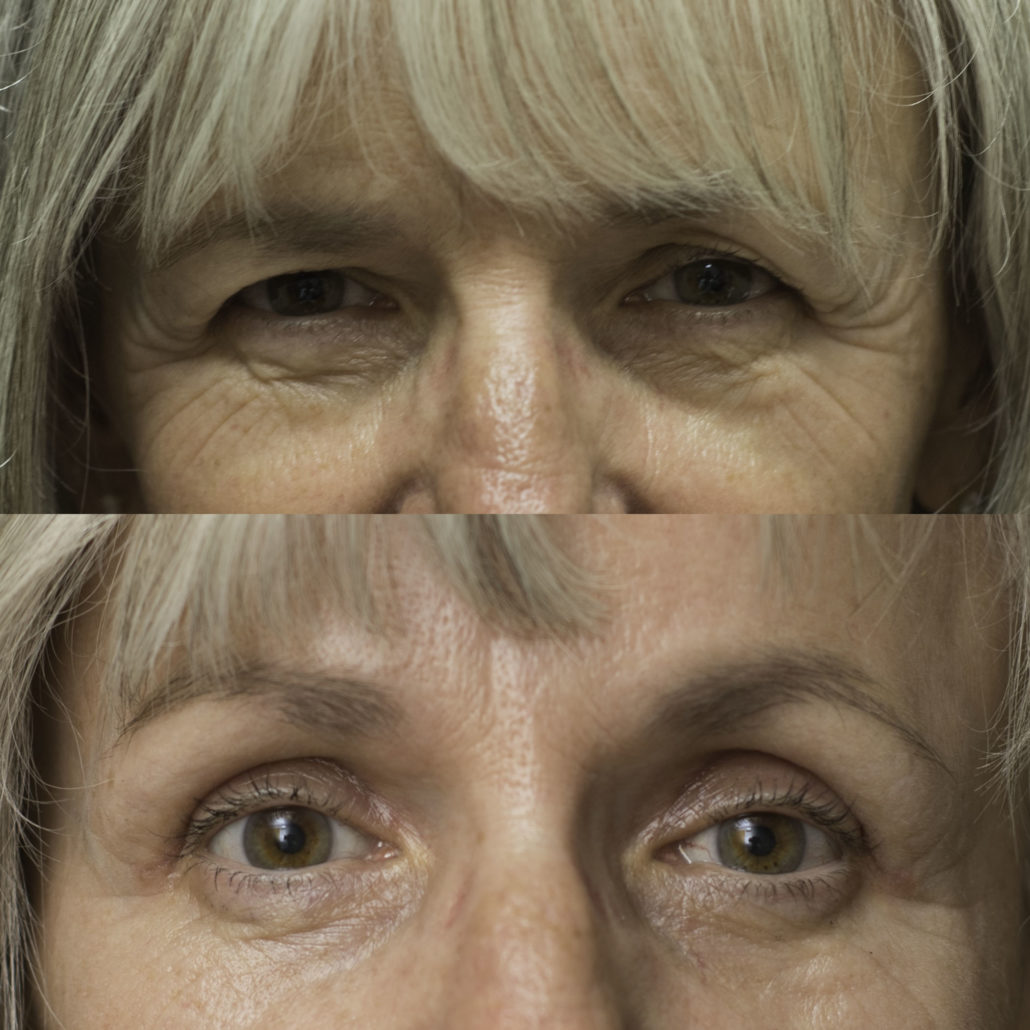
Pre-trichial brow lift and blepharoplasty, before and 4 weeks after surgery.
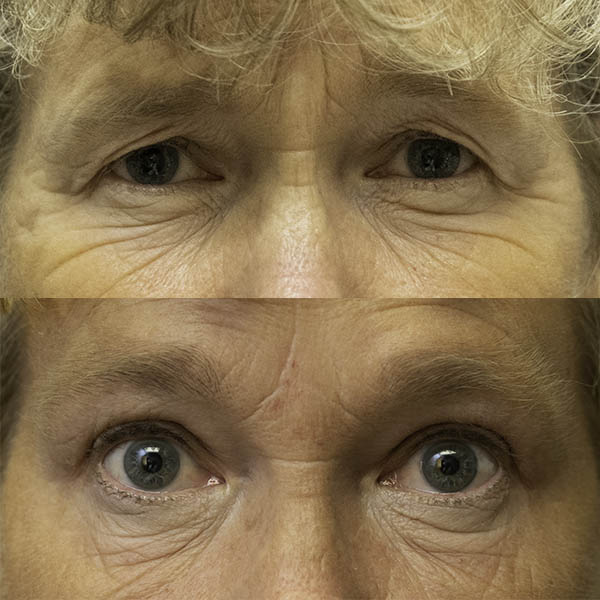
Endoscopic brow lift and upper eyelid blepharoplasty
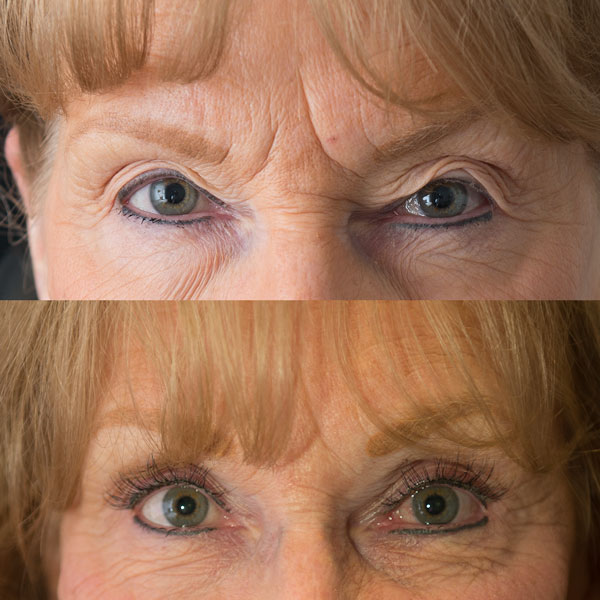
Pre-trichial brow lift and upper eyelid blepharoplasty
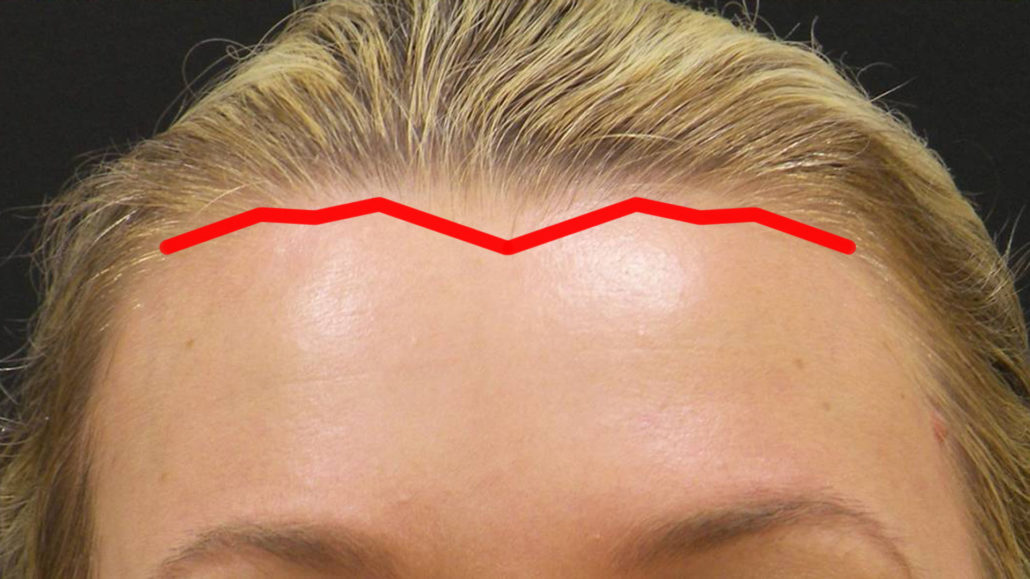
The Pretrichial Eyebrow/ Forehead
The pretrichial eyebrow/ forehead lift requires a long incision. This procedure is ideal for patients who want to both lift the eyebrows and raise and shorten the forehead by removing a strip of skin and underlying tissue along the incision. Because the forehead is shortened, the hairline is lowered which is ideal for those with a high forehead. This procedure lifts everything from the hairline down to the eyebrows and can address eyebrow shape and asymmetry. The scar from the incision, once healed, slowly fades and isn’t very noticeable after 3-6 months. Following the procedure, there will be some bruising and swelling. The top of the head will be numb and this can last for 6-12 months. Patients usually return to their normal daily routine in 2–3 weeks.
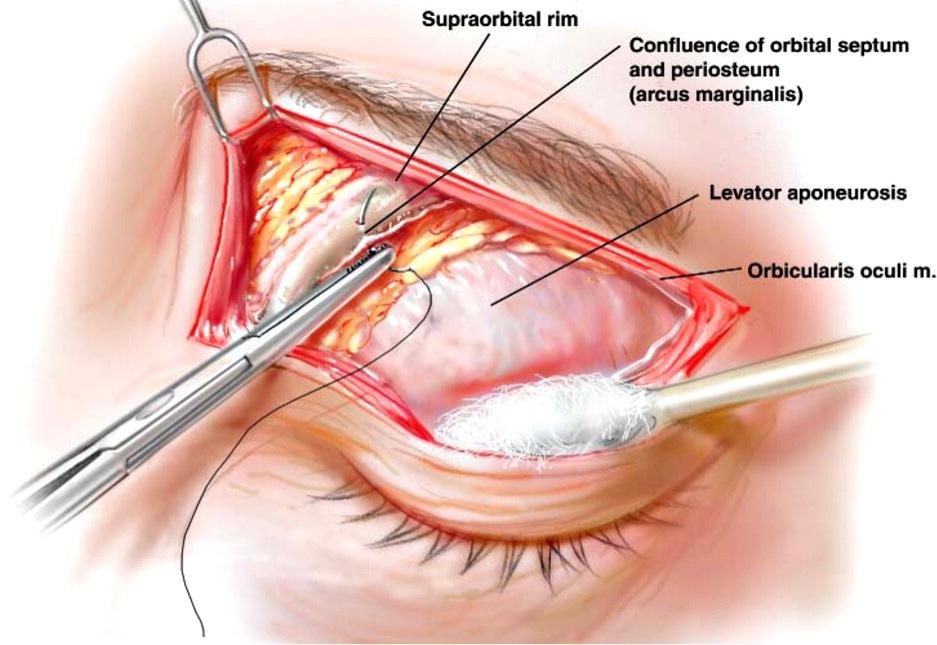
Internal Browpexy
The internal browpexy is used to stabilize and slightly lift the brows. It is performed through the upper eyelid incision at the same time as a blepharoplasty or ptosis surgery. The deep tissues beneath the brow hairs are released and the muscles that pull down the brows are separated. The brows are then sutured in higher positions with deep, absorbable stitches. You can expect about 1/2 to 1cm of lift from a browpexy. The brows will be tender for several weeks and you may have some numbness in the forehead for several months. Browpexy is not intended to dramatically lift the brows, and is less effective in people with heavy or prominent brows. We tend to use it most when other forms of brow lifting can’t be done, such as when a patient has no way to hide a forehead scar (balding, no bangs, very smooth skin, etc.). The biggest drawback to browpexy is that you aren’t removing extra skin, so gravity will eventually pull the brow back down. There is no way to determine when or to what degree this will happen.
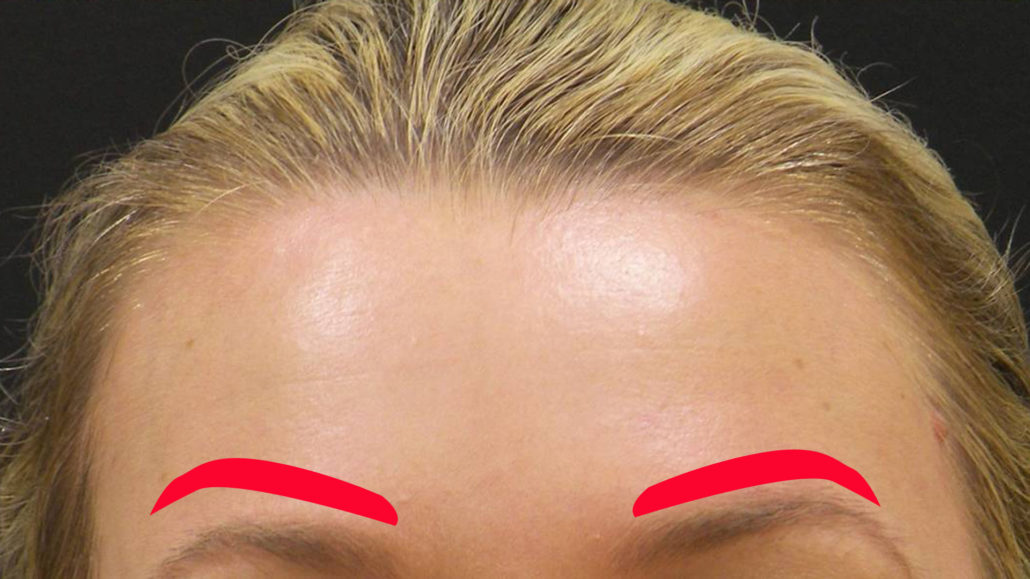
The Direct Brow Lift
The direct brow lift requires removing a section of skin and underlying tissue above and following the length of the eyebrows. This procedure is ideal for those who do not want to involve the hairline. The direct brow lift beautifully lifts a sagging brow while tightening and smoothing the forehead. It does this by pulling the skin and tissue of the forehead down rather than up. It therefore lowers the hairline which is ideal for a receding hairline and/ or a high forehead. This procedure also addresses eyebrow shape and asymmetry. Care is taken to position the scar just along the eyebrows so that it is maximally camouflaged, but some scar can be visible. Patients will experience some bruising and swelling following the procedure. They are usually comfortable returning to their normal routine activities in about 2 weeks. Because scarring can be more noticeable, this technique is not used as frequently as in the past.
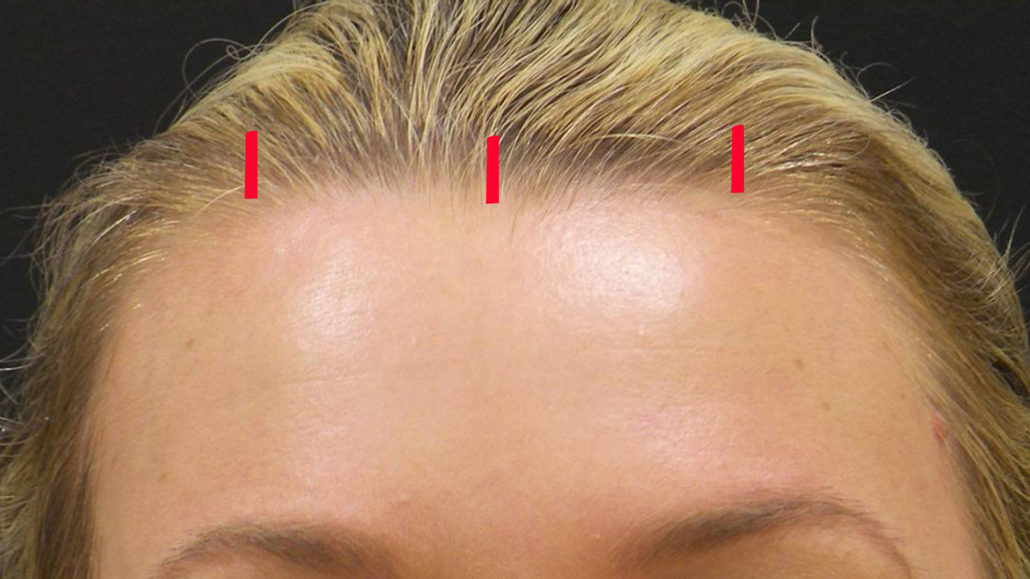
Endoscopic Forehead Lift
The endoscopic eyebrow/ forehead lift is used when you need to hide the incisions, but still lift the entire forehead. It requires 3-5 small incisions hidden in the hair and leaves virtually no visible scar. This procedure can lift everything from the hairline to the eyebrows. It tightens and smoothes the entire forehead while lifting the eyebrow area which “opens up” the entire upper face. Eyebrow shape and asymmetry can be addressed with this type of lift. The skin of the forehead is fixated higher up on the forehead bone with small dissolvable anchors. It is often performed with upper eyelid blepharoplasty. Following the procedure, there will be some bruising and swelling. Patients are usually comfortable returning to their normal routine activities in about 2 weeks.
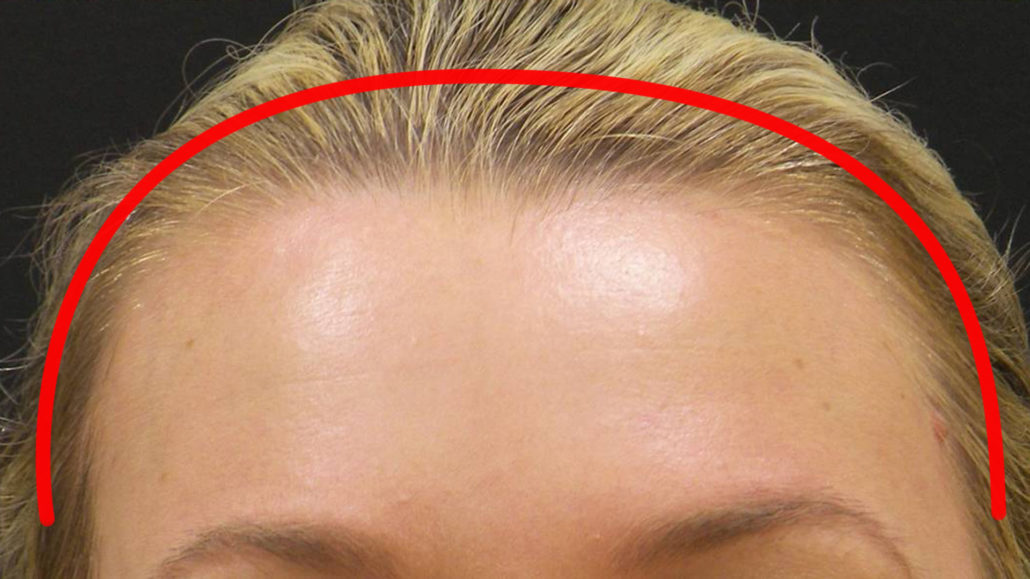
The Coronal Brow Lift
The most invasive, but most effective method to raise the forehead is the coronal lift. It involves making an ear-to-ear incision over the top of the head, removing a wedge of skin and hair. It will last the longest, but can cause a large scar that may be noticeable in certain people. It will also raise the hairline by several centimeters. This procedure isn’t used much anymore as the recovery is long and you can get very similar results with the pre-trichial lift.
Blepharoplasty Surgery Frequently Asked Questions
How to choose the right Blepharoplasty surgeon?
When choosing a surgeon to perform blepharoplasty, look for a cosmetic and reconstructive facial surgeon who specializes in the eyelids, orbit, and tear drain system. As a member of the American Society of Ophthalmic Plastic and Reconstructive Surgery (ASOPRS) Dr. Harris is not only a board certified ophthalmologist who knows the anatomy and structure of the eyelids and orbit, but also has had extensive training in ophthalmic plastic reconstructive and cosmetic surgery. Blepharoplasty is the most common procedure Dr. Harris performs.
Is Blepharoplasty covered by insurance?
Eyelid surgery is very often covered by insurance when it blocks your vision.
